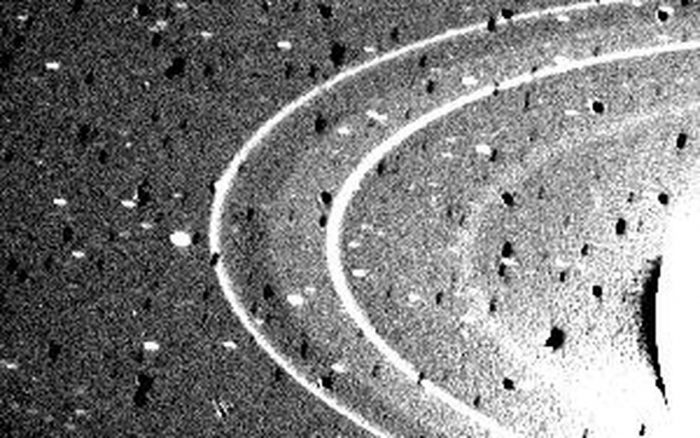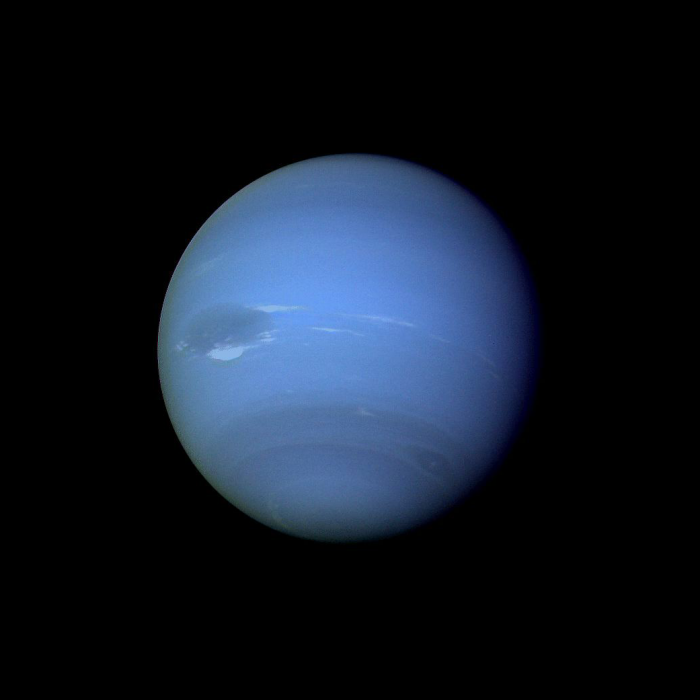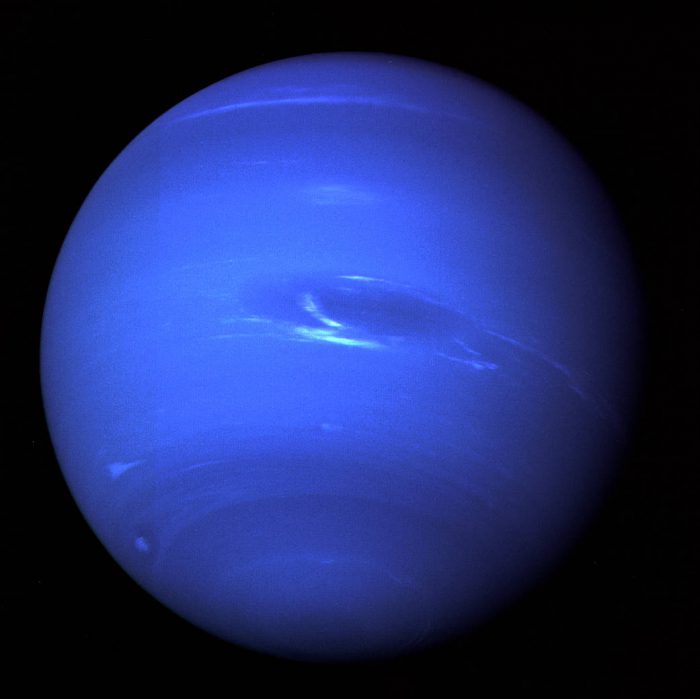Whether it's planning manned missions to Mars, or seeing jaw-dropping images from probes around Jupiter, Saturn, and Pluto, there's a lot of scene-stealing excitement going on in our solar system right now. But you know what planet we're not hearing that much about?
Neptune.
Now, thanks to a NASA project called Outer Planet Atmosphere Legacy (OPAL), this cool blue ice giant is ready to make a little noise. By stringing together years of observations by the Hubble Space Telescope, astronomers are giving us a glimpse of the rise and fall of a massive storm on Neptune. One that was once the size of the North Atlantic Ocean!
Getting in tune with Neptune

Nope, that's not a picture of Saturn. It's Neptune! (NASA/CalTech)
Much of the reason why we don't hear that much about Neptune is simple. It's extremely far away.
Neptune is the eighth and final planet orbiting the Sun, and the only one that cannot be seen with the naked eye. It's about 4.5 billion kilometres from the Sun — nearly twice the distance of the next planet, Uranus, and 30 times farther than the Earth is to the Sun.
Despite (and sometimes because of) this great distance, Neptune has some extremely interesting features. Like Saturn, it has rings (though they're quite faint), and it's one of the coldest places in the solar system, hitting -221.3°C (they don't call it an ice giant for nothing!)
Its winds are the most powerful in the solar system, hitting 2,100 km/h or 1,300 mph (the worst hurricanes on Earth hit only about 295 km/h or 185 mph). In fact, that wind speed is nearly supersonic!
Storm watch

The Great Dark Spot, a storm on Neptune from 25 years ago. Similar storms appear and disappear on the planet. (NASA/CalTech)
Given these high winds and extreme weather, it makes sense then that scientists are interested in Neptune's storms. Back in 1989 when Voyager 2 made our first and only visit to the planet, it observed a huge storm similar to Jupiter's Great Red Spot, called the Great Dark Spot, it eventually faded away. But Neptune constantly generates new, continent-sized storms to replace it.
It is these storms that the Hubble has been watching closely. Since 2015, OPAL has focused the telescope regularly on Neptune, letting NASA watch a new Great Dark Spot-like storm as it slowly fades from view. Scientists hope that this project will give them greater insights into how such storms form on worlds like Neptune.
Watch a NASA representative discuss the project and the life of the storm in the video below.
 Neptune lives a secret life. It is the only planet in the solar system that was discovered by mathematical probability (meaning math formula said it was there), instead by being seen. (NASA)
Neptune lives a secret life. It is the only planet in the solar system that was discovered by mathematical probability (meaning math formula said it was there), instead by being seen. (NASA)










It is DANGEROUS if you go on the planet NEPTUNE!!!! 😯
I’m scared
Now i want to go to neptune
😛